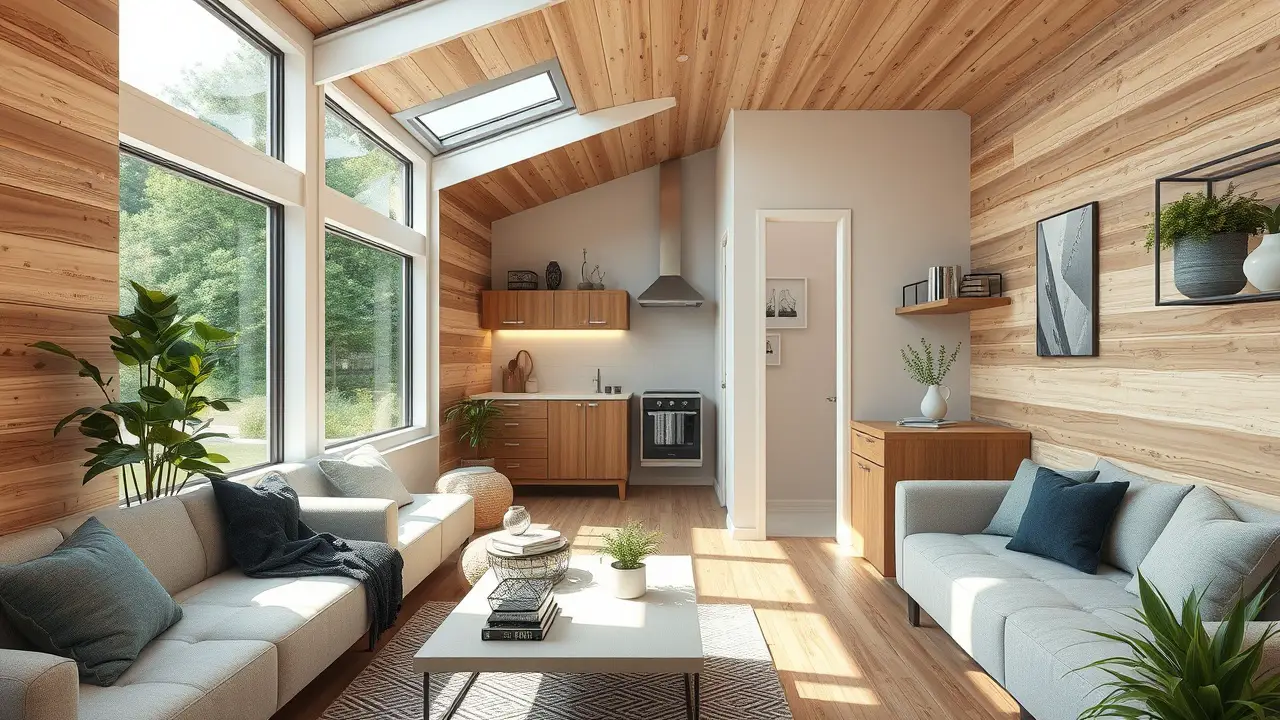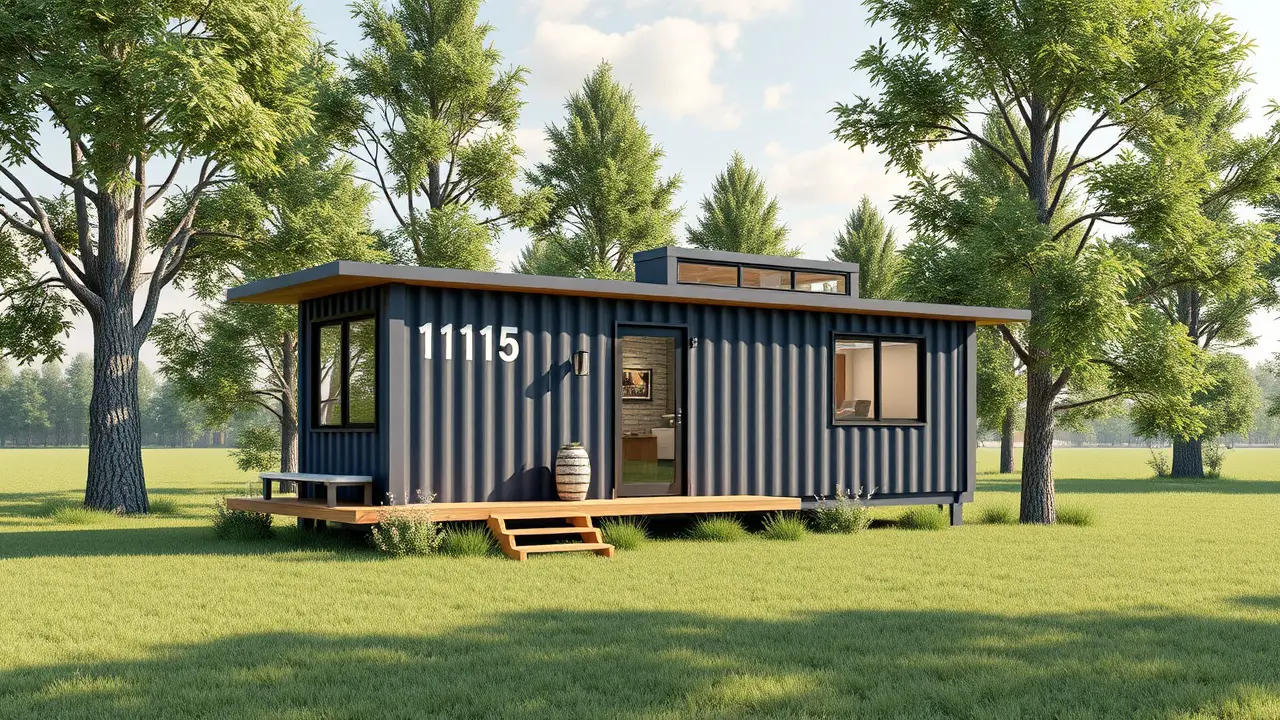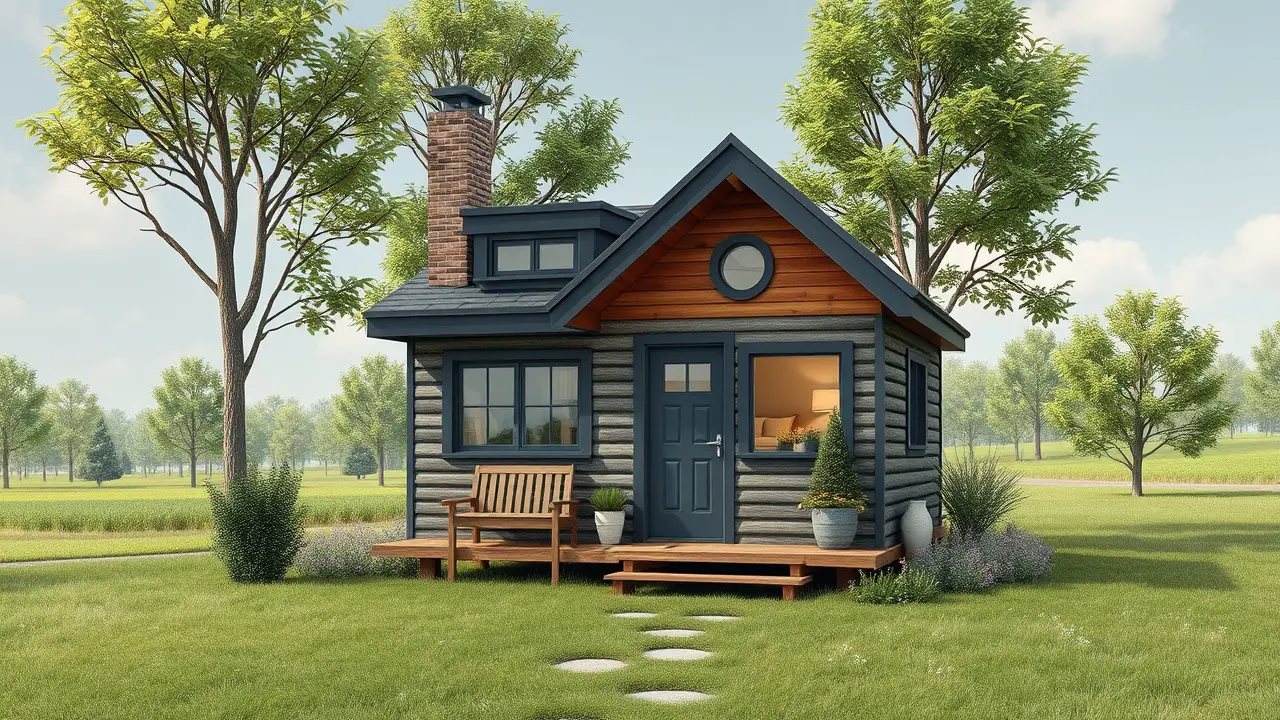Tiny house laws New York: The idea of living in a tiny house has become increasingly popular in recent years, appealing to those seeking a simpler and more sustainable lifestyle.
In New York, however, the dream of owning a tiny house can be hampered by a complex array of laws and regulations.
Contents
Before embarking on the journey of building or buying a tiny house in New York, it’s essential to understand the legal considerations involved.
Building codes, zoning regulations, and permit requirements can vary depending on location, size, and type of tiny house.
In this article, we will explore the laws surrounding tiny houses in New York, providing a comprehensive guide to help you achieve your tiny house dreams.
Understanding Tiny House Regulations in NY
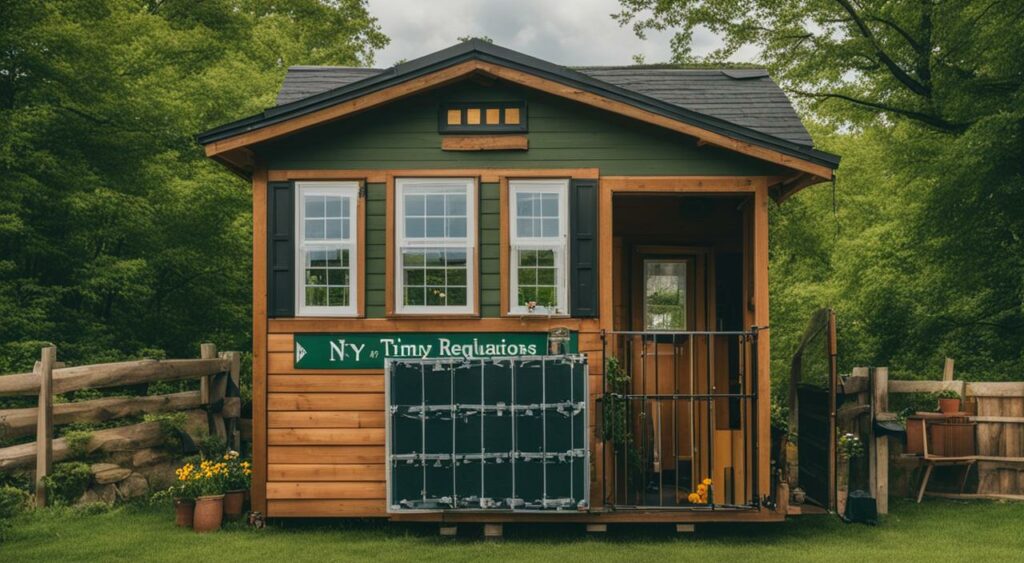
Living in a tiny house can be an exciting and fulfilling experience.
However, before embarking on this minimalist lifestyle, it’s important to understand the regulations surrounding tiny houses in New York.
As with any type of dwelling, there are regulations that must be followed to ensure the safety of the occupants and comply with zoning laws.
These regulations can vary depending on the location of the tiny house, its size, and whether it’s on wheels or a foundation.
Some of the key regulations to be aware of include zoning laws, building codes, and permit requirements.
Zoning Laws
Zoning laws dictate where tiny houses can be located and how they can be used. In New York, zoning regulations for tiny houses can vary depending on the location.
For example, in upstate New York, some local municipalities allow tiny houses to be placed on residential properties as long as they comply with building codes and permit requirements.
However, in urban areas like New York City, it can be more difficult to find a suitable location for a tiny house due to strict zoning regulations.
It’s important to research the specific zoning laws in the area where you plan to build or park your tiny house. This can help you avoid potential legal issues and ensure that your tiny house is compliant with local regulations.
Building Codes
Building codes are in place to ensure that structures are safe and structurally sound. These codes apply to all types of buildings, including tiny houses.
In New York, tiny houses must comply with the same building codes as traditional homes. This includes requirements for structural integrity, fire safety, and energy efficiency.
It’s essential to follow all building codes when constructing a tiny house to ensure the safety of its occupants and prevent legal issues.
Permit Requirements
Permit requirements can vary depending on the location and type of tiny house. In New York, permits are generally required for any type of construction or addition to a property.
This includes the construction of a tiny house. The specific permit requirements can vary depending on the location and the type of tiny house being constructed.
For example, if you’re building a tiny house on a foundation, you may need a building permit and a certificate of occupancy. If you’re building a tiny house on wheels, you may need a permit for the trailer and a permit to park the trailer.
It’s important to research the specific permit requirements in the area where you plan to build or park your tiny house. Failure to obtain the necessary permits can result in legal issues and fines.
Before embarking on a minimalist lifestyle in a tiny house, it’s essential to understand the regulations surrounding these dwellings in New York.
By understanding the regulations surrounding tiny houses in New York, you can ensure that your dwelling is safe, legal, and compliant with local regulations.
Zoning Rules and Regulations for Tiny Homes
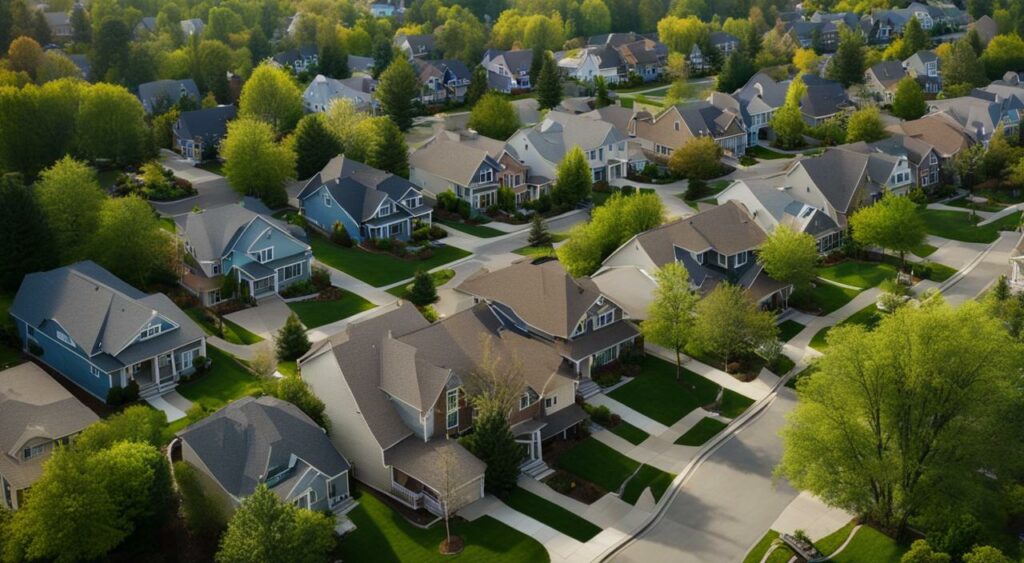
Before building or placing a tiny house in New York, it is important to understand the zoning regulations that apply to it.
Zoning regulations vary by location, and they can have a significant impact on where you can place your tiny home, how it can be used, and what kind of permits you need to obtain.
Zoning Restrictions on Tiny House Placement
In New York, tiny houses are typically subject to the same zoning rules as traditional homes. This means that they must meet the minimum size requirements for the zoning district they are located in, and they must be placed on a permanent foundation.
Many zoning codes also place restrictions on where tiny houses can be located. For example, some areas may not allow tiny houses to be placed on residential lots, or they may require a minimum acreage for homes to be built on.
Moreover, zoning codes usually distinguish between two different types of tiny houses: those on foundations and those on wheels.
Tiny houses on wheels are often classified as RVs or mobile homes, and they may be subject to additional regulations related to parking and occupancy.
Zoning Codes Related to Tiny House Use
In addition to zoning restrictions related to placement, many local codes also regulate how tiny houses can be used.
For example, some communities may prohibit the use of tiny houses as primary residences, requiring them to be used as accessory dwellings or vacation homes instead.
Others may require certain upgrades or features, such as a septic system or a minimum number of entrances and exits.
Obtaining Permits for Tiny House Placement and Use
In order to legally build or place a tiny house in New York, you will likely need to obtain a variety of permits, including building permits, zoning permits, and occupancy permits.
These permits may vary depending on the size, location, and use of your tiny house, and they may also require you to meet specific building codes and safety regulations.
It is important to research the requirements in your local area before starting your project to avoid costly fines or delays.
“Zoning regulations can be complex and vary from town to town,” says Lisa Trosien, Vice President of Marketing at Apartment Experts. “It’s important to work with an experienced professional who can help you navigate the process and ensure that your tiny house is compliant with local regulations.”
When it comes to building or placing a tiny house in New York, it is essential to understand the zoning rules and regulations that apply in your local area.
By doing your research and obtaining the necessary permits, you can ensure that your tiny house project is both legal and safe.
Building Codes for Tiny Houses in NY
Tiny houses must adhere to the same building codes as traditional homes.
The New York State Uniform Fire Prevention and Building Code (the “Uniform Code”) sets forth the codes and standards for construction in New York.
The Uniform Code sets minimum standards for safety, health, and welfare, including standards for mechanical, plumbing, and electrical systems.
When it comes to tiny houses, the main challenge is ensuring that the tiny house is structurally sound while also being compact and efficient.
The Uniform Code requires that all structures, including tiny houses, have a solid foundation, adequate ventilation, and proper egress in case of an emergency.
The International Residential Code (IRC) has specific guidelines for tiny homes on foundations.
The IRC requires that tiny houses on foundations have at least 150 square feet of living space, with at least one room that is 7 feet in any direction.
Additionally, a tiny house must have a kitchen area and a separate bathroom area that includes a toilet, sink, and shower.
Finally, a tiny house must have a minimum ceiling height of 6 feet 8 inches. For tiny houses on wheels, the building codes are somewhat different.
The National Fire Protection Association (NFPA) has developed a set of standards for recreational vehicles, and many tiny houses on wheels fall under this category.
The NFPA 1192 standards cover everything from plumbing and electrical systems to fire safety and structural integrity.
While building codes may seem like a burden, they are in place to ensure that your tiny house is safe and livable.
Working with a professional builder who is familiar with New York’s building codes is essential to ensure that your tiny house meets all necessary standards.
Permit Requirements for Tiny House Construction in NY
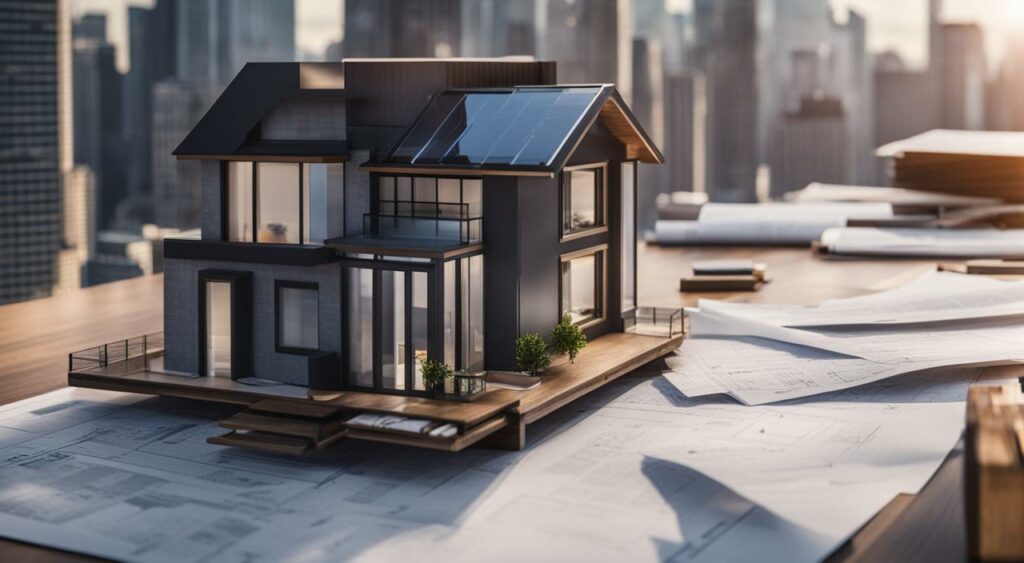
Building a tiny house in New York requires obtaining the necessary permits to ensure compliance with zoning laws and building codes.
The specific permits needed may vary depending on factors such as the location and intended use of the tiny house.
According to the New York State Department of State, the following permits are typically required for tiny house construction:
| Type of Permit | Description |
|---|---|
| Zoning permit | Issued by the local zoning board to ensure compliance with zoning regulations such as property setbacks and land use. |
| Building permit | Issued by the local building department to ensure compliance with building codes such as structural safety and environmental standards. |
| Electrical permit | Issued by the local electrical inspector to ensure compliance with electrical codes and safety standards. |
| Plumbing permit | Issued by the local plumbing inspector to ensure compliance with sanitation and water supply regulations. |
It is important to note that permit requirements may vary depending on the location of the tiny house.
For example, building a tiny house in New York City may require additional permits and approvals due to the unique zoning regulations in the area.
When applying for permits, it is important to have a detailed plan and design for the tiny house, as well as documentation showing compliance with relevant regulations and codes.
Failure to obtain the necessary permits can result in fines and legal complications.
Overall, navigating the permit process can be a challenging aspect of building a tiny house in New York, but it is essential for ensuring the safety and legality of the project.
Zoning Regulations for Tiny Houses in New York City

When it comes to tiny houses in New York City, zoning regulations can be a bit more complex than in other areas of the state.
This is due to the city’s unique density and focus on high-rise buildings, rather than a more spread-out suburban environment.
According to the New York City Zoning Resolution, the term “tiny house” is not officially recognized, and the regulations for these dwellings fall under the category of “accessory dwelling units.”
These are defined as living quarters that are secondary to the main residence on a property and include units like basement apartments and guesthouses.
Currently, the only legal way to have a tiny house in New York City is by building an accessory dwelling unit on a property that already has a primary residence.
However, even in this case, strict regulations apply.
Zoning Regulations for Accessory Dwelling Units in NYC
Firstly, the property must be located in a R1 or R2 residential zone. These are typically lower-density areas that include neighborhoods like Staten Island, Riverdale, and Bayside.
Next, the property must meet all the building and construction requirements for an accessory dwelling unit. This includes having a maximum size of 500 square feet and meeting all applicable safety and accessibility codes.
It’s also important to note that the property owner must occupy either the main residence or the accessory dwelling unit, and they are not allowed to rent out both units to different tenants.
In addition, the unit must be registered with the Department of Buildings and pass inspections prior to occupancy.
Challenges for Tiny House Living in NYC
While these regulations make it difficult to legally own and live in a tiny house in New York City, some are pushing for change.
The Tiny House Movement NYC is a grassroots organization advocating for more flexible and accommodating zoning laws that would allow people to live in tiny houses on a larger scale.
One solution proposed by the group is the creation of “tiny house villages,” in which several tiny houses would be situated on a single lot.
They argue that these communities could provide affordable housing options while also reducing the city’s housing crisis and environmental impact.
However, until zoning laws change, the reality of tiny house living in New York City remains limited to a select few who are able to navigate the complicated regulations.
Tiny House on Wheels Laws in New York
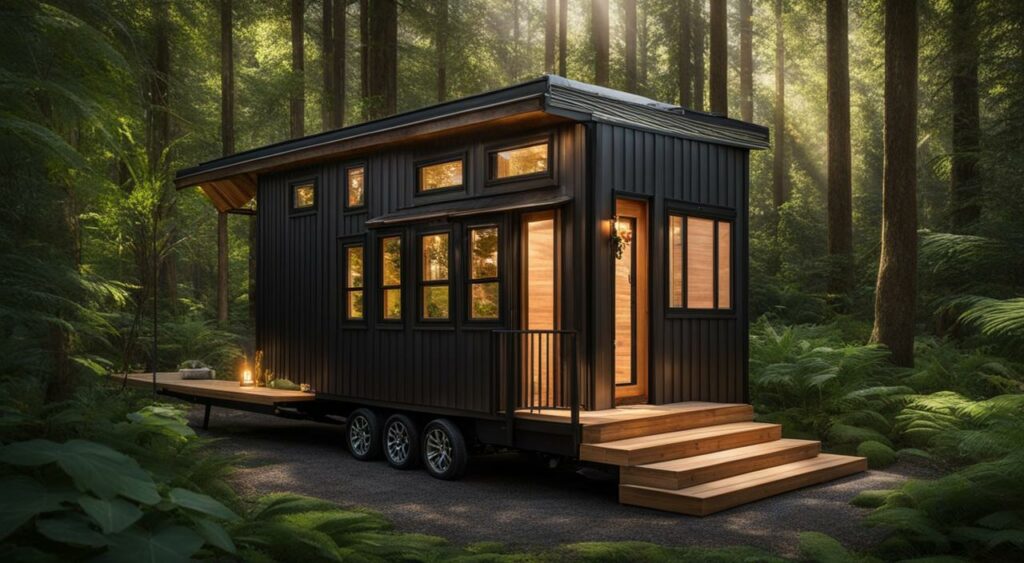
Tiny houses on wheels are a popular alternative to traditional tiny homes because they offer more mobility and flexibility. However, living in a tiny house on wheels in New York comes with its own set of laws and regulations.
Firstly, it’s important to note that New York City currently prohibits the residential use of trailers, which includes tiny homes on wheels.
In other areas of the state, the legality of tiny houses on wheels varies depending on the local zoning laws and building codes.
If you plan to own and use a tiny house on wheels in New York, you must comply with the state’s vehicle registration laws.
According to the New York Department of Motor Vehicles, a tiny house on wheels can be registered as either a house trailer or a motorhome, depending on the specific features and amenities of the dwelling.
Additionally, if you plan to travel with your tiny house on wheels, you must comply with the state’s transportation laws.
This includes obtaining the necessary permits for oversized loads and ensuring that your tiny house on wheels meets all safety and weight restrictions for the roads you plan to travel on.
It’s important to note that living in a tiny house on wheels full-time may also impact your eligibility for certain public services, such as voting or obtaining a driver’s license, as your address may not be considered a permanent residence according to state law.
In summary, if you’re considering a tiny house on wheels as your new home in New York, it’s crucial to thoroughly research and comply with all applicable laws and regulations to ensure a smooth and legal transition to tiny house living.
Tiny House Communities in New York

While tiny houses are still a relatively new housing concept, several communities have emerged in New York that cater to this lifestyle.
These communities offer an affordable and sustainable housing option for individuals and families who want a simpler way of life.
Community Features
Tiny house communities are designed to provide all the necessary amenities of a home in a smaller and more efficient space.
These communities offer common areas for residents to gather, including shared kitchens and laundry facilities. Some communities even have gardens and outdoor spaces for residents to enjoy.
One example of a tiny house community in New York is the Escape Brooklyn Micro Resort, located in the Catskill Mountains.
This community features several tiny homes that are available for rent, each with its own unique design and layout.
Residents have access to communal areas, including a fire pit and outdoor grill, as well as nearby hiking and skiing opportunities.
The Benefits of Tiny House Living
Beyond the affordability and sustainability of tiny house living, there are several other benefits to this lifestyle. Tiny houses are often located in more rural areas, providing a break from the hustle and bustle of city living.
Residents have the opportunity to connect with nature and cultivate a simpler, more intentional way of life. In addition, tiny houses promote minimalism and reduce the need for material possessions.
This can lead to a more fulfilling and less stressful lifestyle, as residents focus on experiences and relationships rather than accumulating things.
Finally, tiny house communities offer a sense of community and connection that is often lacking in traditional housing settings.
Residents have the opportunity to build relationships with their neighbors and create a supportive network of like-minded individuals.
“Tiny houses promote minimalism and reduce the need for material possessions. This can lead to a more fulfilling and less stressful lifestyle.”
In conclusion, tiny house communities are a growing trend in New York that offers a unique and fulfilling way of life.
From their affordability and sustainability to their emphasis on minimalism and community, tiny houses offer many benefits for those seeking a simpler way of life.
Legal Considerations for Building a Tiny House in New York

Building a tiny house in New York requires a deep understanding of the legal considerations involved.
While there are no statewide regulations specifically dedicated to tiny houses, there are various laws and regulations that must be considered in the building process. Here are some of the key legal considerations for building a tiny house in New York:
Property Rights
One of the first legal considerations for building a tiny house in New York is property rights. It is essential to ensure that the land on which the tiny house is built is owned by the builder or that the builder has permission to build on the property.
Additionally, it may be necessary to research local property laws or homeowner association regulations to ensure that a tiny house can be built on the land.
Contracts
Before beginning the building process, it is crucial to have a written contract between the builder and any contractors involved. The contract should outline the terms of the project, including timelines, costs, and expected deliverables.
Insurance
Insurance is another critical legal consideration for building a tiny house in New York.
Builders should ensure that they have proper insurance coverage for the construction process, including liability coverage for any potential accidents or injuries.
Once the tiny house is finished, it is also essential to secure property insurance in case of damage or theft.
Taxation
Owners of tiny houses in New York must also consider taxation. Depending on the location and use of the tiny house, property taxes and sales taxes may apply. It is essential to research the relevant tax laws to ensure compliance with all regulations.
Code Compliance
Finally, builders of tiny houses in New York must ensure that their structures comply with all relevant codes and regulations.
This includes adherence to building codes, electrical codes, and plumbing codes, among others. It is crucial to research and understand these codes to avoid potential fines or legal issues.
“While tiny houses may be small, they are still subject to many of the same legal considerations as larger homes. It is essential to research and understand all relevant laws and regulations to ensure compliance throughout the building and ownership process.”
State Regulations for Tiny House Dwellings
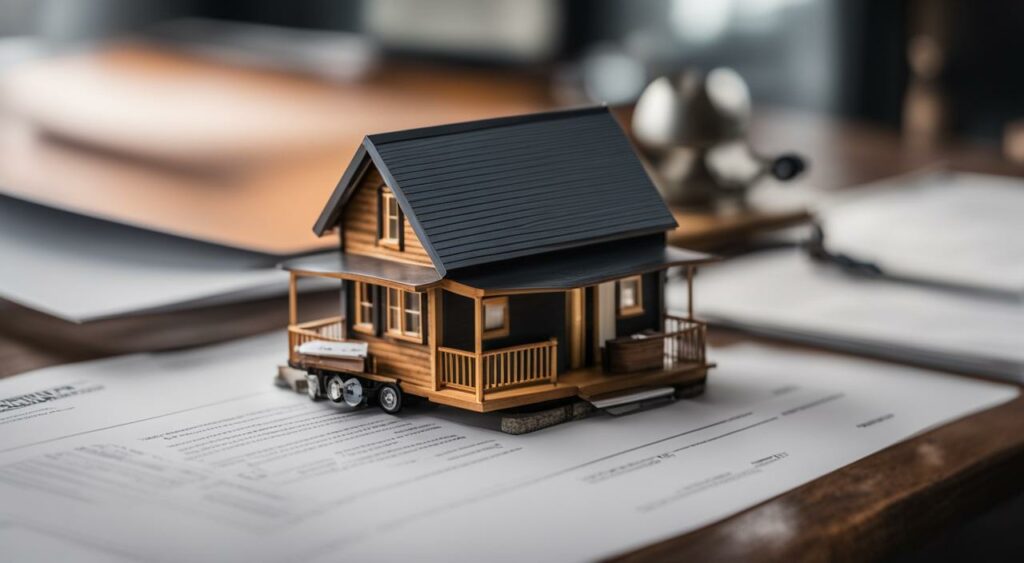
While the state of New York does not have specific regulations in place for tiny house dwellings, there are still certain requirements that must be met in order to legally live in a tiny house.
According to the New York State Department of State, any dwelling unit must comply with the New York State Uniform Fire Prevention and Building Code.
This includes minimum room and ceiling heights, minimum square footage, and safety requirements for things like electrical and heating systems.
Additionally, tiny homes on foundations must comply with local zoning codes and land use regulations, which can vary depending on the location.
For example, in some areas, tiny homes on foundations may be allowed in residential areas but not in commercial zones.
It’s also important to note that certain types of tiny homes, such as those on wheels, may not be legal to live in full-time in some areas.
While the state of New York allows for the use of tiny houses on wheels as recreational vehicles, they may not be able to be used as permanent residences in all locations.
If considering building or living in a tiny house in New York, it’s important to research and understand all relevant regulations and requirements to ensure compliance and avoid any legal issues.
Affordable Housing Laws in New York
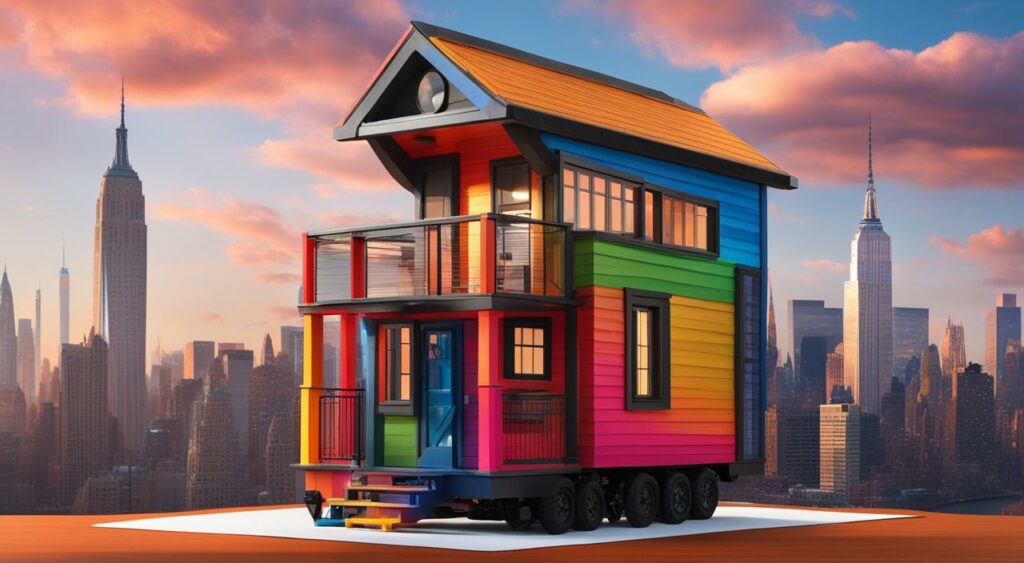
New York State prioritizes the availability of affordable housing options for its residents. As such, there are a number of laws and regulations in place to support the development and preservation of affordable housing in the state.
One such law is the New York State Homes and Community Renewal (HCR) agency, which oversees a number of programs designed to increase access to affordable housing for low- and moderate-income households.
These programs include the Housing Trust Fund, the Community Investment Fund, and the New York State Affordable Housing Corporation.
Additionally, the state provides tax incentives for developers who build affordable housing units.
The Low-Income Housing Tax Credit Program is one such program, which enables developers to apply for tax credits that can then be sold to investors, providing an additional source of funding for affordable housing projects.
Furthermore, New York City has its own affordable housing plan, which aims to create and preserve 300,000 affordable housing units by 2026.
The plan includes a number of initiatives, such as mandatory inclusionary zoning, which requires developers to include affordable housing units in new construction projects.
While tiny houses may not be explicitly included in these affordable housing laws and initiatives, they do offer a potential solution for addressing the affordable housing crisis in New York.
By building tiny houses as affordable housing units, developers and homeowners alike can take advantage of tax incentives and other programs designed to incentivize the development of affordable housing.
Overall, the affordable housing laws in New York represent a promising opportunity for tiny house developers and advocates to promote the use of tiny houses as a viable affordable housing solution.

Conclusion
Living in a tiny house in New York may seem like a dream come true for many individuals, but it is important to understand the rules and regulations that come with it.
From zoning laws to building codes, permit requirements, and legal considerations, there are many factors to consider before embarking on a tiny house journey.
Despite the challenges, the benefits of tiny house living in New York are numerous, ranging from affordability to sustainability and minimalism.
With the right research, planning, and execution, anyone can turn their tiny house dreams into a reality in the state of New York.
Furthermore, with the rising demand for affordable housing options in New York, tiny house living can serve as a viable solution for many individuals and families.
By investing in tiny house communities and implementing affordable housing laws, the state can promote a more sustainable and equitable housing market while providing more options for its residents.
Overall, tiny house living in New York may not be easy, but it is definitely worth considering for those who prioritize simplicity, sustainability, and affordability.
With the right mindset and resources, anyone can make their tiny house dreams a reality in the Empire State.

FAQ
-
What are tiny house laws in New York?
Tiny house laws in New York refer to the regulations and guidelines that govern the construction, placement, and use of tiny houses in the state.
-
What are the regulations surrounding tiny houses in New York?
The regulations surrounding tiny houses in New York include zoning laws, building codes, and permit requirements that must be followed in order to legally build and live in a tiny house.
-
What are the zoning rules and regulations for tiny homes in New York?
Zoning rules and regulations for tiny homes in New York dictate where they can be located, how they can be used, and any restrictions or limitations that may apply.
-
What building codes apply to tiny houses in New York?
Tiny houses in New York must comply with building codes that ensure safety, structural integrity, and energy efficiency.
-
What permits are required for building a tiny house in New York?
Building a tiny house in New York requires obtaining the necessary permits, which may vary depending on the location and specific requirements of the project.
-
Are there specific zoning regulations for tiny houses in New York City?
Yes, New York City has its own zoning regulations that apply specifically to tiny houses, which may have additional considerations or restrictions compared to the rest of the state.
-
What are the laws and regulations for tiny houses on wheels in New York?
Tiny houses on wheels in New York must adhere to specific laws and regulations related to parking restrictions and road legality.
-
Are there any existing tiny house communities in New York?
Yes, there are some tiny house communities in New York that offer unique living opportunities and may have their own development regulations and benefits for residents.
-
What are the legal considerations for building a tiny house in New York?
Building a tiny house in New York requires understanding property rights, contracts, and insurance considerations to ensure compliance with the law.
-
What state regulations apply to tiny house dwellings in New York?
New York imposes regulations on tiny house dwellings, including size restrictions, occupancy limits, and health and safety requirements.
-
Do affordable housing laws in New York impact tiny houses?
Affordable housing laws in New York may impact the development and availability of tiny houses as an affordable housing option, depending on specific regulations and policies.


